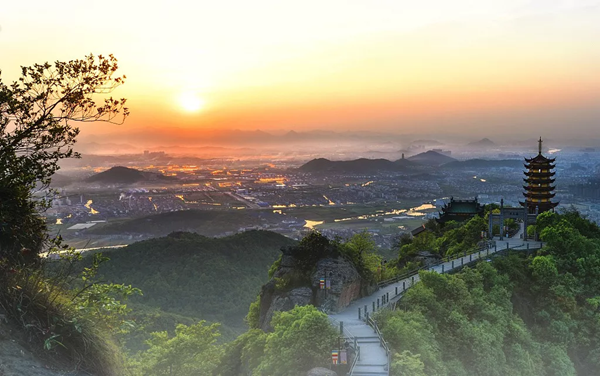This is Shaoxing

Shaoxing in East China's Zhejiang province [Photo/sxwg.sx.gov.cn]
Population: 5,035,000 permanent residents (2018)
Location: central-northern part of Zhejiang province, and north of the Qiantang River estuary
Area: 8,279 square kilometers
Economy:
In 2018, Shaoxing recorded a regional GDP of 541.7 billion yuan ($78.65 billion), 7.1 percent higher than that of 2017 and ranking fourth in Zhejiang province. The added value of primary industry was 19.6 billion yuan, increasing by 2.3 percent, the secondary industry was 261.2 billion yuan, rising by 6.9 percent and the tertiary industry reached 260.9 billion yuan, growing by 7.7 percent. The proportion of the three industries in GDP was 3.6 percent, 48.2 percent and 48.2 percent.
Administrative divisions:
Under the jurisdiction of the city of Shaoxing are three urban districts, Yuecheng, Keqiao and Shangyu, two county-level cities, Zhuji and Shengzhou, and one county, Xinchang. Together they enclose 67 towns, 15 townships, 35 sub-districts, 558 neighborhood communities and 2,129 administrative villages.
Brief introduction:
Shaoxing in East China's Zhejiang province is known variously as the "City of Waters", "City of Bridges", "City of Calligraphy", "City of Tea" and "City of Scholars". It gives off an image of an elegant and peaceful locale with deep cultural connotations of Jiangnan (the region south of the Yangtze River).
Shaoxing is one of the most famous historical cities in China. Numerous accomplished scholars and figures were born or lived here, such as Yu the Great in ancient China and the famous 20th century writer Lu Xun. Therefore, the city boasts the title of "City of Personages". It was also the seat of the ancient Yue Kingdom during the Spring and Autumn Period (770-476 BC) and was quite prosperous during that time. Owing to its long history, this old city reveals less vanity and tinsel than some modern metropolises. What is commonly seen and experienced here is a kind of leisurely and peaceful ambience.
